This lecture can be viewed on YouTube site: Life Scinence Lectures for you
https://youtu.be/GGfcycAyU9s
1. Overview of the Lecture Content
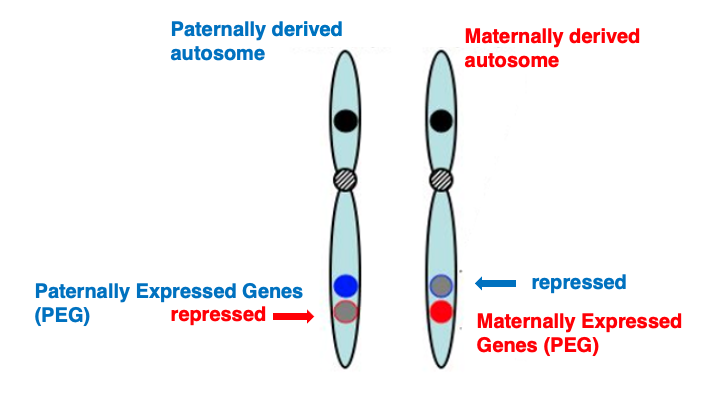
Many animals can develop normal female individuals without receiving sperm from males. This is called parthenogenesis.
However, in mammals, some genes on both females and males are suppressed (genomic imprinting). Therefore, genomes from both sexes are essential to have one set of expression-capable genome.
Key words: Parthenogenesis, Triploid carp (Ginbuna), Honeybee Life Cycle, Paternally Expressed Gene (PEG), Maternally Expressed Gene (MEG), Conflict Hypothesis
2. Parthenogenesis

3. Parthenogenesis of triploid silver carp (Ginbuna )
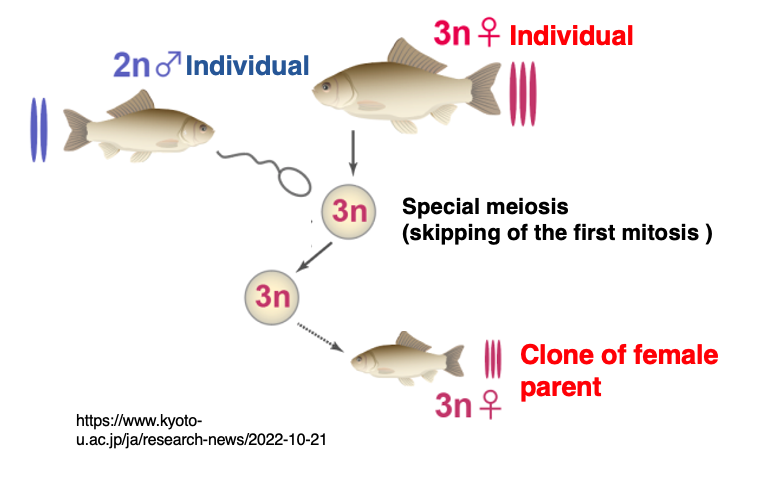
Most Ginbuna individuals are triploid females. The 3n oogonia undergo special meiosis (skipping the first division) to produce 3n eggs.
The eggs are activated by sperm from related 2n species, but the sperm nucleus is excluded. This results in female offspring with the same genetic composition as the female parent.
Therefore, triploid Ginbuna increase their population through parthenogenesis, and the relationship between individuals is clonal.
4. Honeybee Life Cycle Including Parthenogenesis

In honeybees, only the 2n Queen bee has reproductive ability and lays 1n eggs. If these eggs develop without fertilization, they become 1n males. Honeybee males are born through parthenogenesis. 1n males can form 1n sperm without meiosis during spermatogenesis.
Eggs are fertilised by sperm, resulting in 2n fertilised eggs and 2n individuals. All 2n individuals in honeybees are female. Female larvae that develop without royal jelly become 2n worker bees without reproductive ability. Only one female given royal jelly becomes a queen bee with reproductive ability and can produce eggs.
5. Parthenogenesis by Fusion of Egg and Polar Body: Automixis
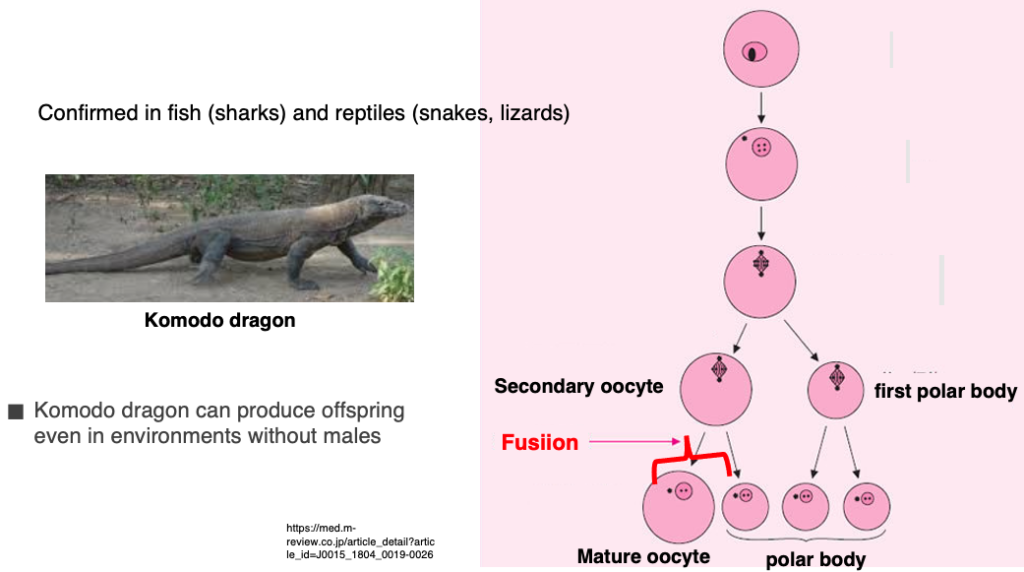
In addition to clonal reproduction like in triploid Ginbuna, some fish and reptiles exhibit automixis, where the egg fuses with a polar body to form a 2n egg that develops into an individual.
In this case, the chromosome combinations in the oocyte change, so the female parent and female offspring are not clones. Some genetic diversity is maintained among offspring.
This type of parthenogenesis allows reproduction without males but has the drawback of limited genetic diversity in offspring.
6. Organisms Where Parthenogenesis is Blocked
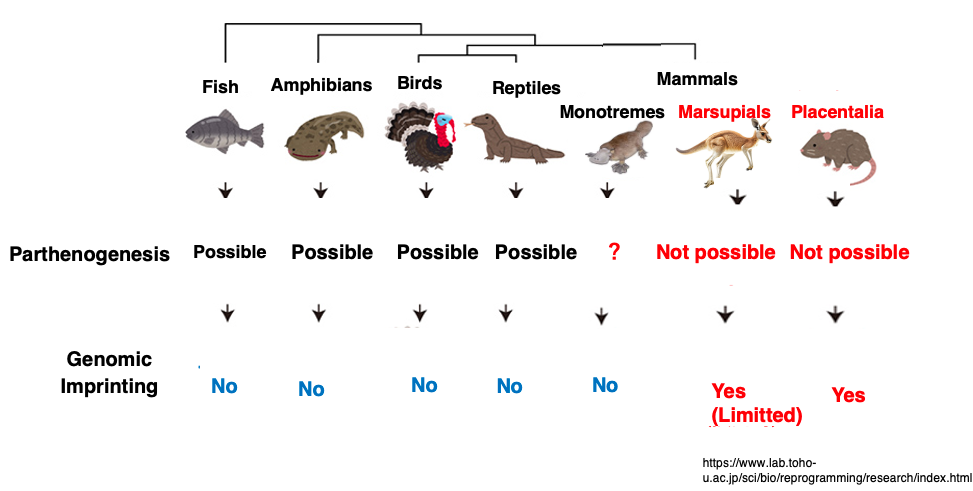
Parthenogenesis is not possible in all organisms. Marsupials like kangaroos and placental mammals have genetic systems that block it.
In marsupials and placental mammals, some genes on the autosomes of both females and males are pre-suppressed. This is called genomic imprinting. Therefore, genomes from both sexes are essential to have one set of expressible genome.
7. Genomic Imprinting Blocking Parthenogenesis
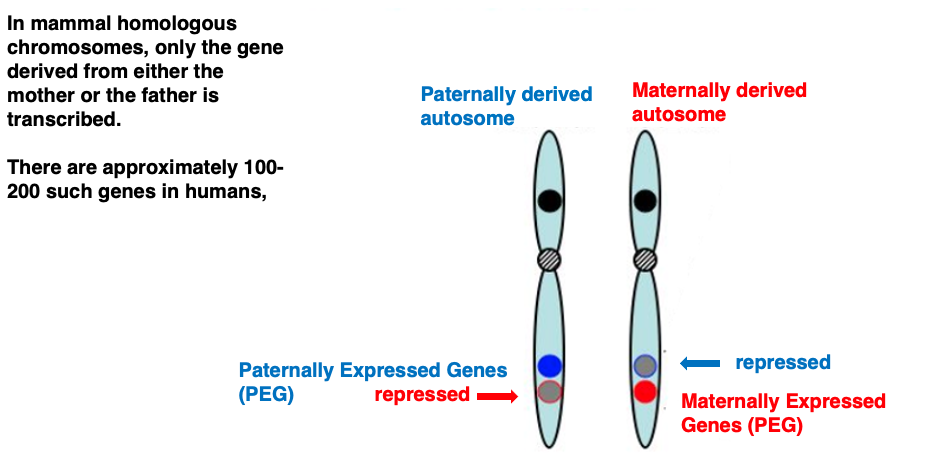
The phenomenon where only one parental allele is transcribed on homologous chromosomes is called genomic imprinting.
Genes transcribed only from the paternal genome are called Paternally Expressed Genes (PEG), while those transcribed only from the maternal genome are called Maternally Expressed Genes (MEG).
8. Genomic imprinting through DNA methylation
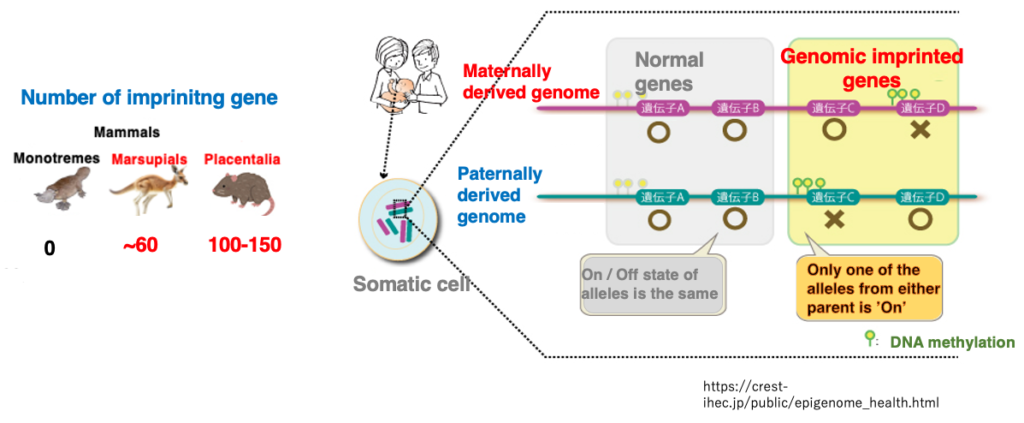
In marsupials with underdeveloped placentas, about 60 genes are estimated to undergo genomic imprinting. In developed placental mammals, 100-150 genes are estimated to be imprinted. Such suppression of specific gene expression is maintained throughout life in somatic cells through DNA methylation and histone modifications.
On the other hand, it is estimated that such genomic imprinting does not exist in monotremes, which do not have a placenta and lay eggs.
Therefore, in marsupials and placental mammals, even if a 2n egg formed by fusion of an egg and polar body, both genomes are maternal, resulting in the absence of Paternally Expressed Genes (PEG). This causes embryonic development to stop very early in pregnancy.
9. Chromosomal Distribution of PEGs and MEGs
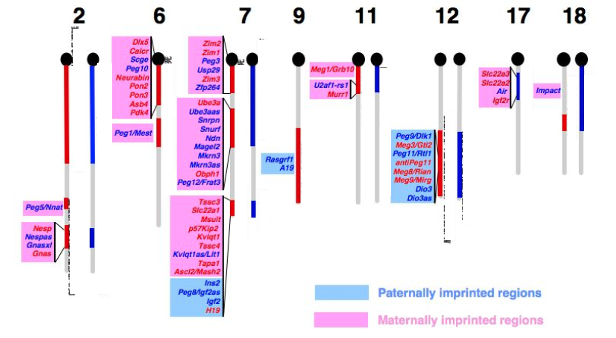
Paternally Expressed Genes and Maternally Expressed Genes form clusters concentrated in specific parts of certain chromosomes.
This allows for efficient application of epigenetic control mechanisms (such as DNA methylation and histone modification).
10. Re-imprinting
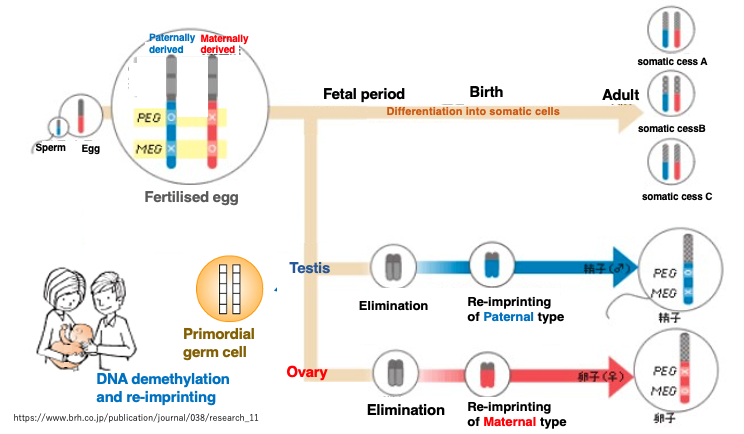
Expression suppression is maintained throughout life in somatic cells due to epigenetic mechanisms like DNA cytosine methylation and histone modification.
In fetal primordial germ cells, DNA demethylation necessary for PEG/MEG removal occurs at a gender-specific time. Sex-specific reprogramming methylation occurs after days 15-16 post-fertilization in males and 2-3 days after birth in females.
However, in sperm and eggs produced by the next generation, PEG/MEG must be reset and reprogrammed to suit each sex.
11. Role of Genomic Imprinting: Conflict Hypothesis
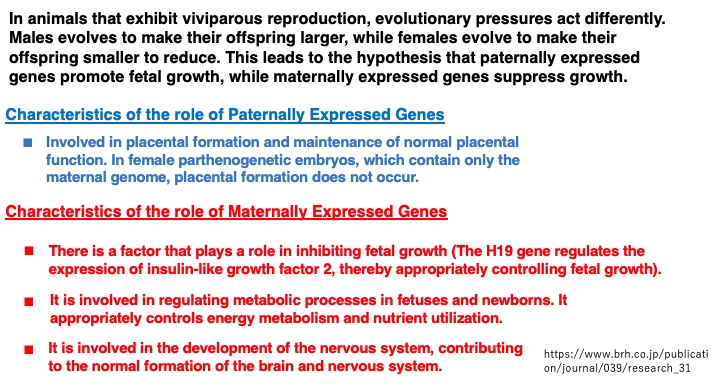
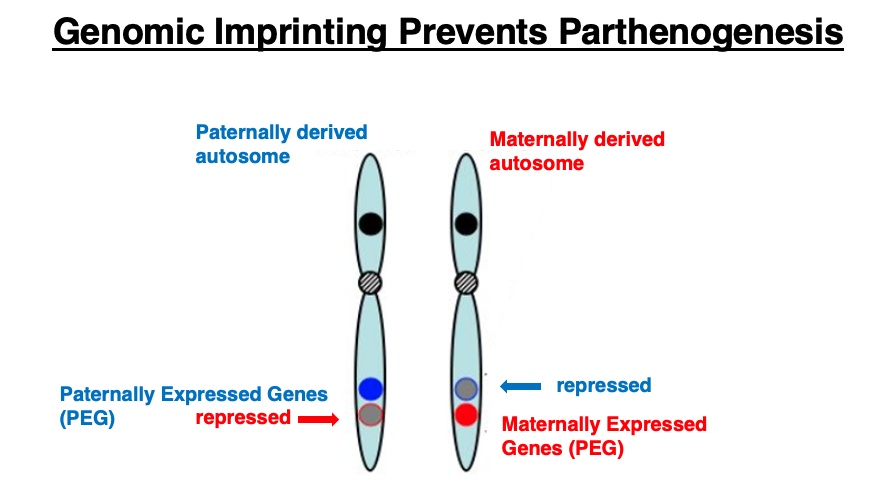
コメント